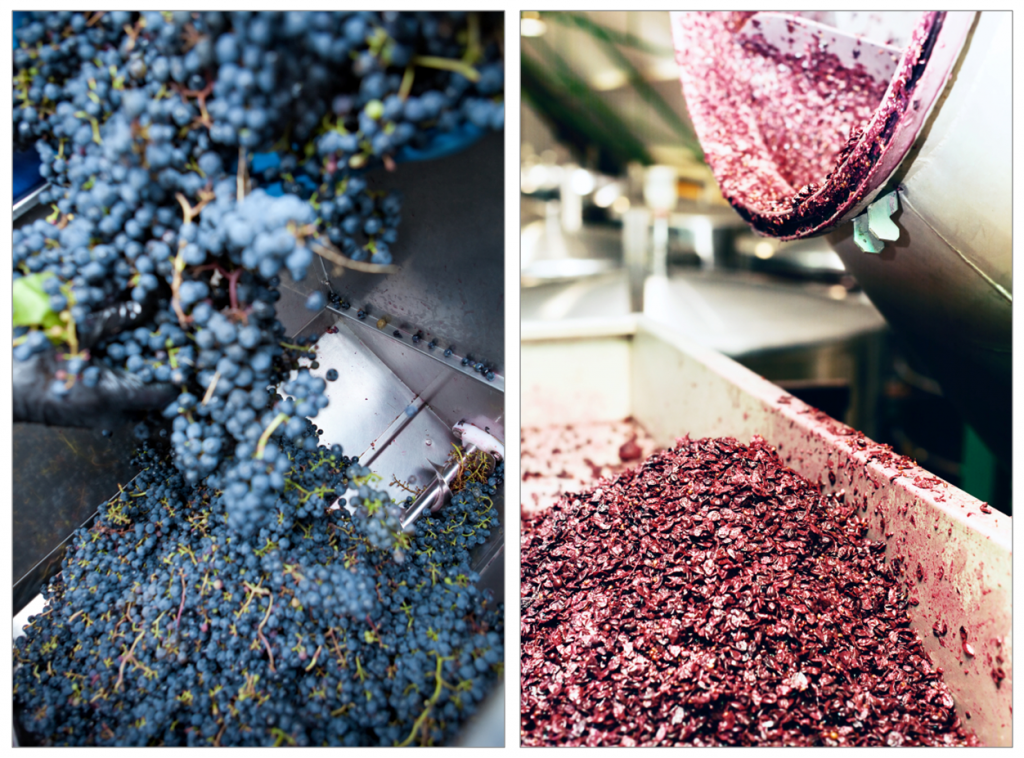Ever notice that there is no garbage in nature? Did you know that an average American generates 1,900 pounds of waste each year? It seems to me that maybe we could be taking our cues from nature when it comes to getting rid of trash.
Unlike a person, Nature doesn?t have the option to create waste because there is no place to throw things ?away.? Ecosystems function in perfect cycles where one organism?s waste is another organism?s sustenance. If we make the effort it is possible to mimic the way that nature recycles, turning all that waste into the building blocks for plants. It?s not that hard, we just need to do a better job composting.
Like many things, we don?t need to reinvent the wheel. Whether you compost at home, or through a local recycler, a few key ingredients are needed: heat, moisture and a fuel source, such as food scraps. With the right conditions the microorganisms do all the work for us, turning waste into plant food.

In the winery we press white grapes, like Chardonnay, to extract the juice to be barrel fermented. The red grapes, like Cabernet, are fermented in tanks with the grape skins and seeds to extract more flavor and color; the wine is drained and we?re left with a lot of grape stems, seeds, skins and pulp.
All of this leftover grape waste is great composting material. Either on site, or through a commercial vendor, we compost these leftovers so they can be used to naturally enrich the soil in the vineyard. It?s a great life cycle approach that puts back much of what was taken out of the vineyard to help perpetuate the ecosystem.
Composting, whether here at our winery or at your own home, not only provides a rich source of natural fertilizer, but also prevents the creation of methane in landfills, a powerful green house gas. Here in the San Francisco Bay Area we?re lucky to have curbside compost collection.
This means that each week when we wheel out our recycling and garbage bins, we also set out a third bin that can is loaded up with compostable materials. All the green yard waste, from grass clippings to small tree limbs and go into the compost. That?s only part of the story because so much of the food waste we generate can also be composted.
 Many people are initially turned off by the idea of saving food scraps in the kitchen for a week at a time. It?s really not that big a deal if you keep a little dedicated garbage can with a tight lid on it under the sink. Line the can with a regular plastic garbage bag, and when it?s full simply turn it over in the compost bin outside, toss away the garbage bag and line the kitchen can with a new bag and start over.
Many people are initially turned off by the idea of saving food scraps in the kitchen for a week at a time. It?s really not that big a deal if you keep a little dedicated garbage can with a tight lid on it under the sink. Line the can with a regular plastic garbage bag, and when it?s full simply turn it over in the compost bin outside, toss away the garbage bag and line the kitchen can with a new bag and start over.
I taught our four year-old boy to do it; now he has fun figuring out what?s recycling, compost or garbage. If you have a compost service you?ll need to check with it to see what materials are allowed, but they all take any food scraps that come from plant foods. Most commercial composters reach the high temperatures needed to handle products like compostable plastics, and may even take meat scraps or paper with grease on it.
 Another option is to do your own composting at home. There are plenty of resources to help get started from the local gardening store or online. Keep in mind that composting at home is slower than commercial composting because it is unlikely that your backyard will reach the high temperatures reached at a facility. Don?t compost meat ? it will break down, but it can attract lots of critters you don?t want around your yard. Make sure to maintain a 1:1 mix of ?green? products like foods and ?brown? products like yard waste. This maintains a good balance of nitrogen (green) and cellulose (brown).
Another option is to do your own composting at home. There are plenty of resources to help get started from the local gardening store or online. Keep in mind that composting at home is slower than commercial composting because it is unlikely that your backyard will reach the high temperatures reached at a facility. Don?t compost meat ? it will break down, but it can attract lots of critters you don?t want around your yard. Make sure to maintain a 1:1 mix of ?green? products like foods and ?brown? products like yard waste. This maintains a good balance of nitrogen (green) and cellulose (brown).
Whether you?re composting with a commercial service, at home or like us here at the winery, we?re all doing a great thing by following nature?s lead. Now we?re recycling all the great stuff that we used to call ?waste? and putting it to good use.

